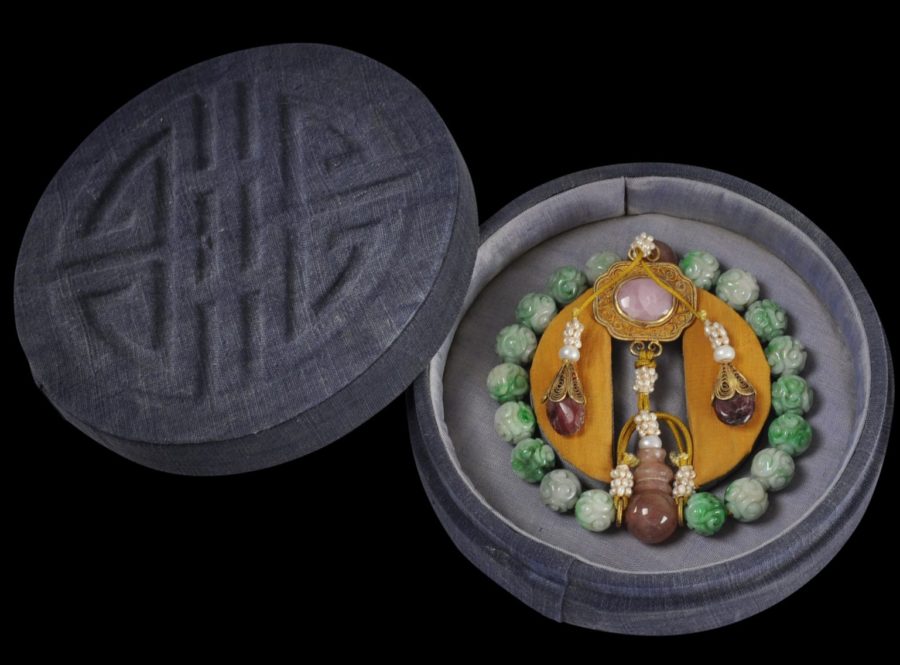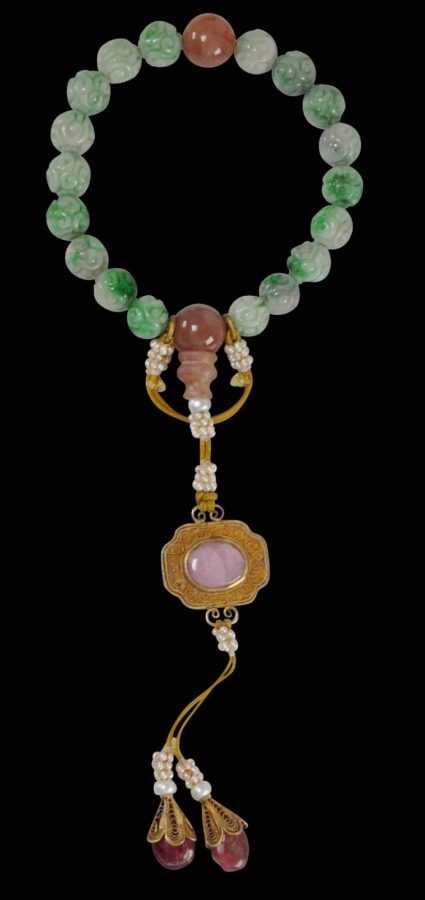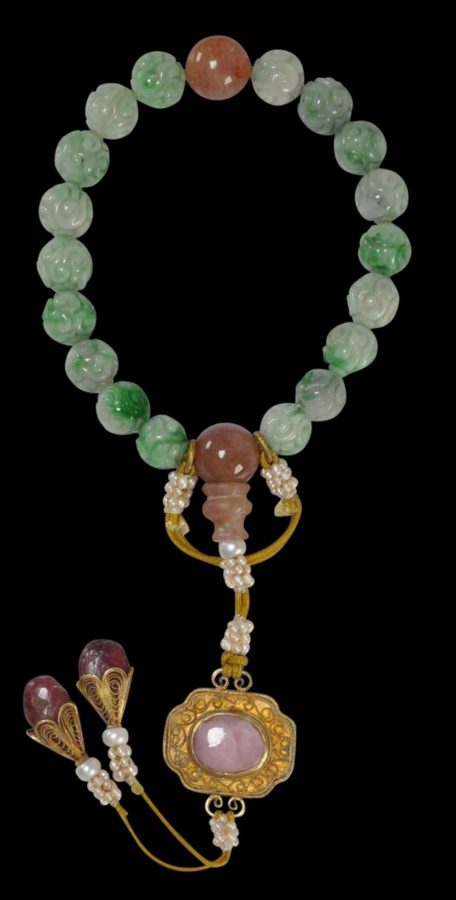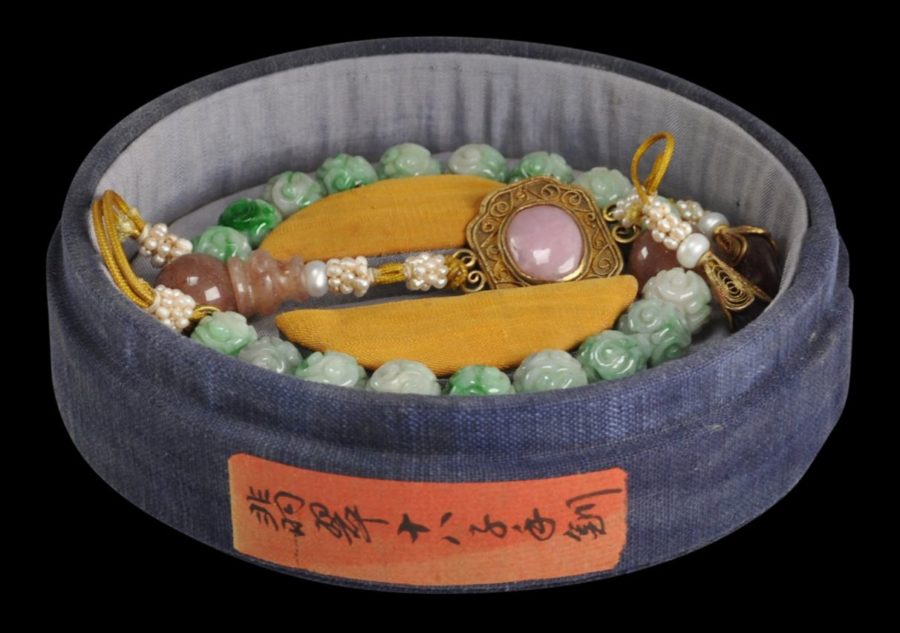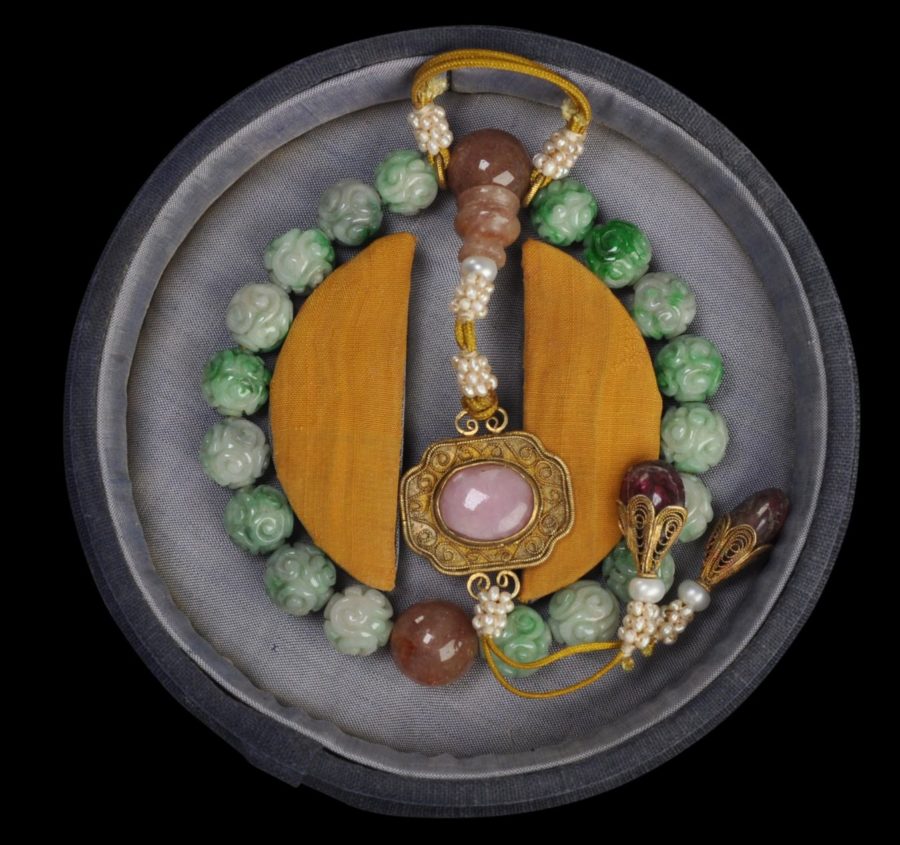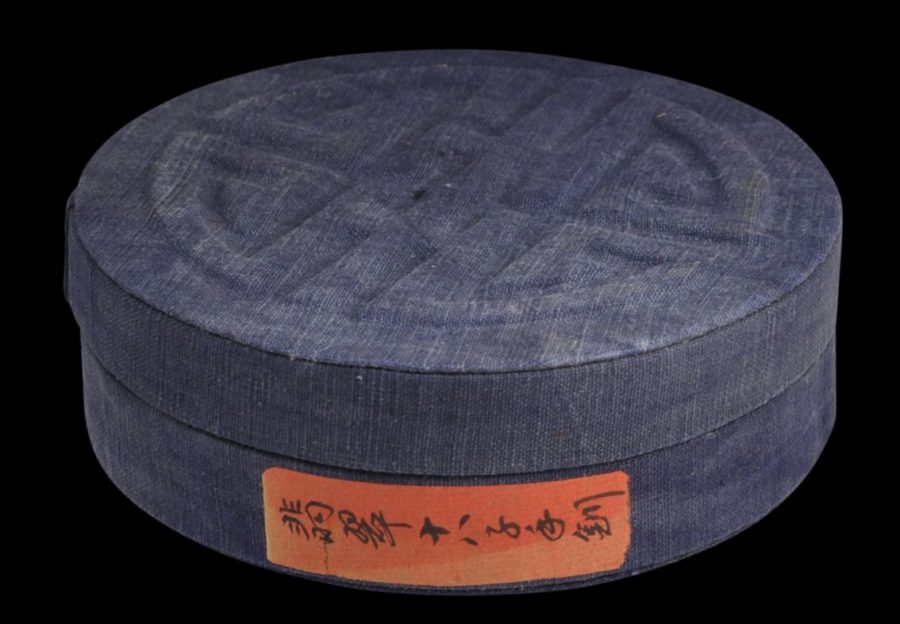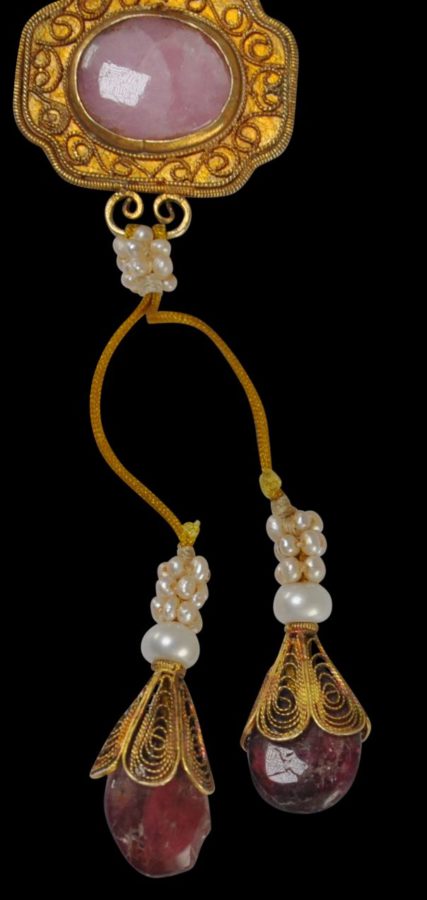Enquiry about object: 6408
Chinese Eighteen-Bead Rosary-Bracelet of Carved Jade, Pearls, Tourmaline & Gilded Silver in Original Box
China late 19th century or early 20th century (late Qing Dynasty)
diameter of bracelet component: 8cm, length of rosary: 22.5cm, weight: 55g, diameter of box: 12.5cm, height of box: 4cm
Provenance
UK art market
This splendid hand rosary or rosary-bracelet is of eighteen carved, mottled apple-green jadeite beads; pearls; agate beads; and with a gilded silver pendant set on both sides with a tourmaline cabochon and decorated with filigree from which two spinel cabochons in gilded filigree mounts and with more pearls are suspended. All are strung on the original gold metallic thread.
The rosary-bracelet is in its original, circular box that is covered in fine, blue fabric. The lid is impressed in relief with a long-life motif.
The inside of the lid is stamped in red ink with a seal mark that reads: 得自在禪 or ‘Realising oneself with Zen’. This is not a brandname but is a small saying that fits with the religious or meditative nature of the contents of the box.
The outside of the box retains an orange paper label marked in black ink with Chinese script. This reads: 翡翠十八子手釧 or ‘jadeite eighteen-bead bracelet’.
Rosaries and rosary-bracelets are devices used by Buddhist monks and the Buddhist faithful to keep count of the prayers they were reciting in the name of the Buddha. Originally, they were made from seeds, bone or wood. Later, they came to be made of precious materials such as the example here. These became collectable religious items in their own right. Rosary-bracelets customarily are made of 18 beads and are known as 18-tzu, and rosaries comprise 108 beads.
Related (though less elaborate) examples in the National Palace Museum are illustrated in National Palace Museum (2012, p. 140).
The rosary-bracelet and box here are all in excellent condition.
References
Chen, H.S. et al, Catalogue of the Exhibition of Ch’ing Dynasty Costume Accessories, National Palace Museum, 1986.
National Palace Museum, Royal Style: Qing Dynasty and Western Court Jewellery, 2102.


